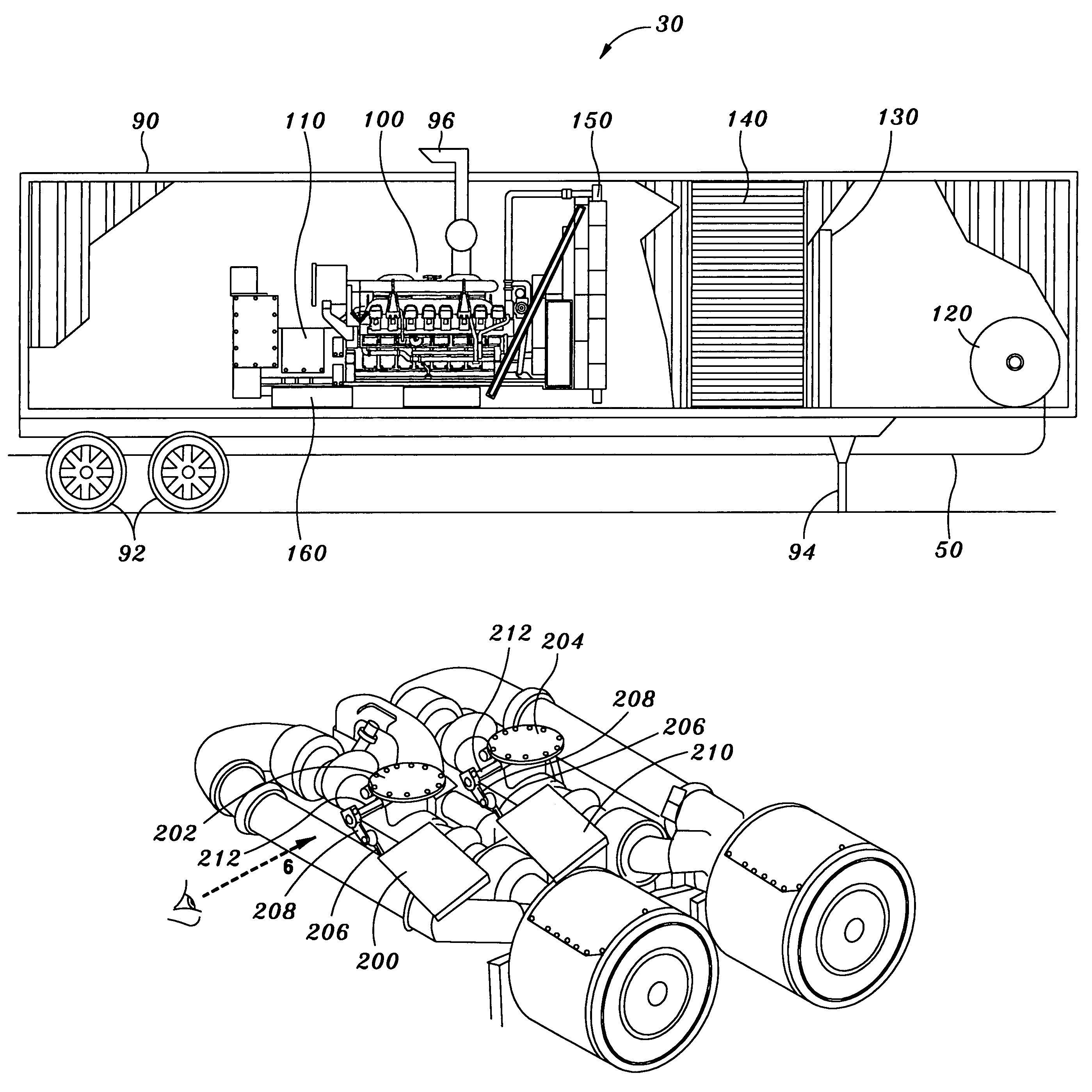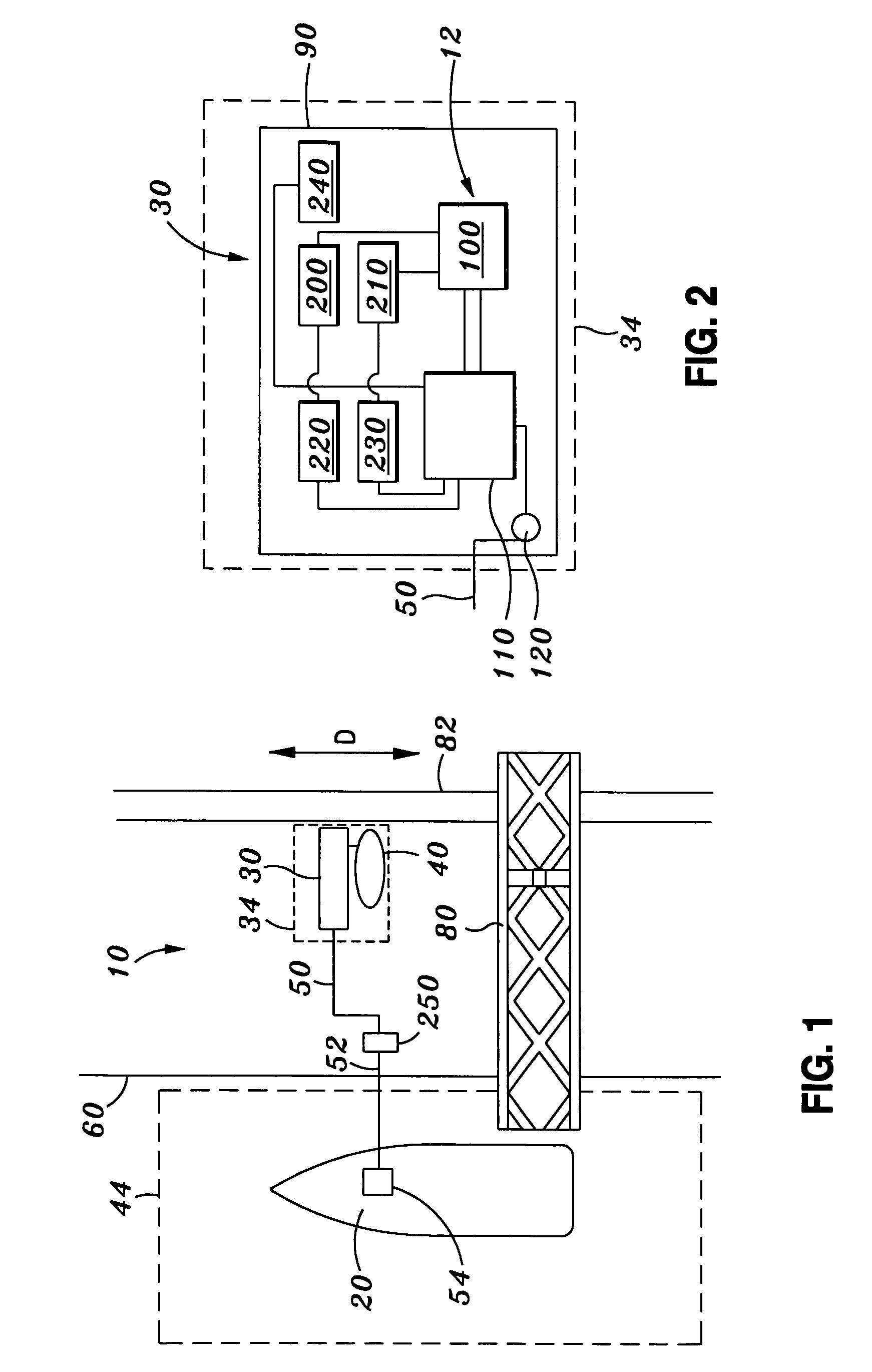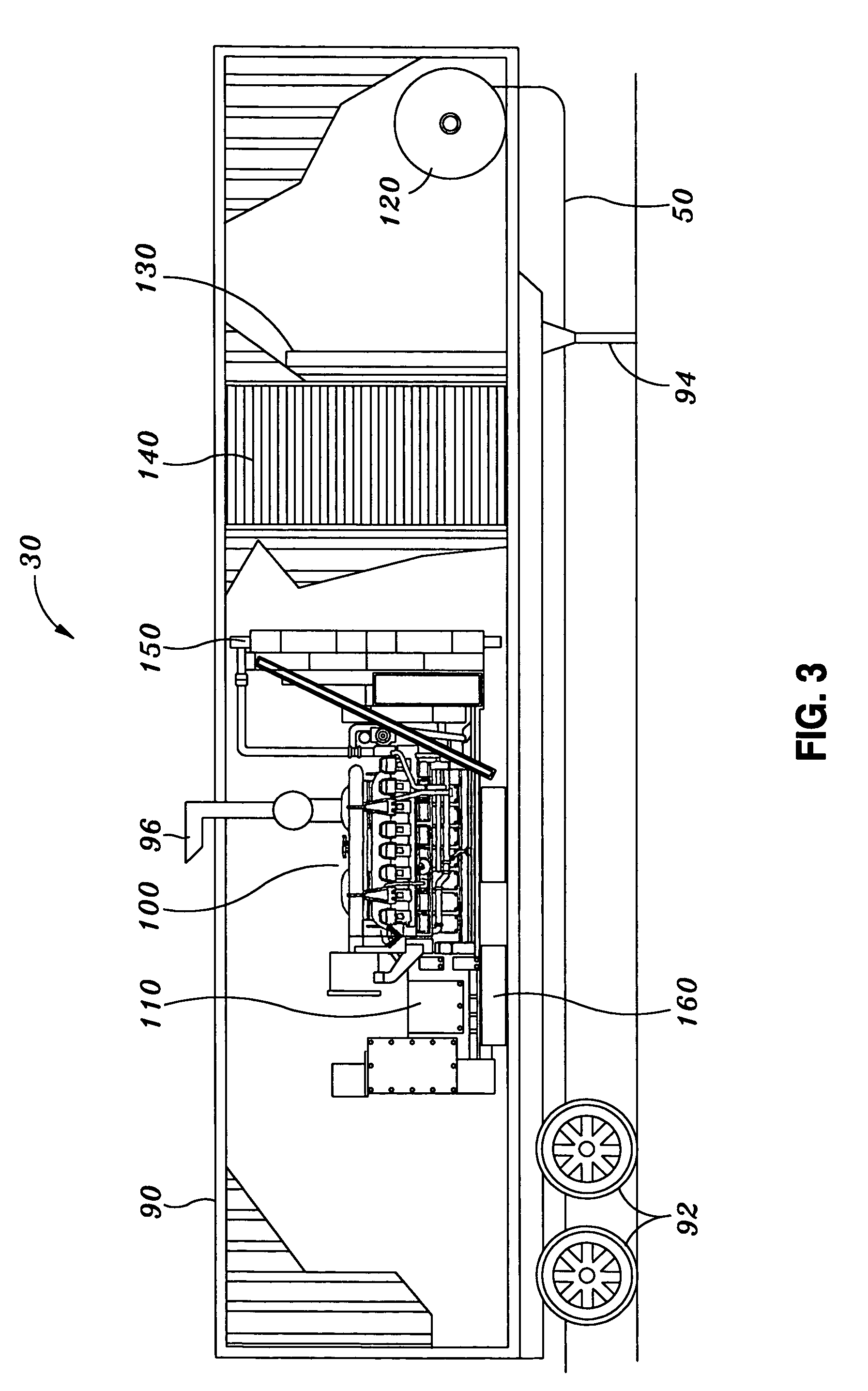Modular power generation apparatus and method
a technology of electrical generators and modules, applied in the direction of machines/engines, transportation and packaging, vehicle energy devices, etc., can solve the problems of not having catalytic converters and other pollution control devices, generators are often single voltage and single frequency systems, and cannot be used at multiple sites
- Summary
- Abstract
- Description
- Claims
- Application Information
AI Technical Summary
Benefits of technology
Problems solved by technology
Method used
Image
Examples
Embodiment Construction
[0028]The following detailed description is of the best currently contemplated modes of carrying out the invention. The description is not to be taken in a limiting sense, but is made merely for the purpose of illustrating the general principles of the invention, since the scope of the invention is best defined by the appended claims.
[0029]The present invention is useful for switchable power delivery with selectable frequency and voltage settings. “Switchable power” is intended to refer to electrical power that is capable of being changed in frequency and / or voltage without mechanically connecting or disconnecting portions of a generator or motor. Additionally, the invention is useful for reducing pollution by using cleaner fuels for generating electricity and emissions controls for a motor driving a generator. The invention is useful for generating electrical power during electrical outages, or for providing auxiliary power supply. One such use is for marine vessels such as ships, ...
PUM
 Login to View More
Login to View More Abstract
Description
Claims
Application Information
 Login to View More
Login to View More - R&D
- Intellectual Property
- Life Sciences
- Materials
- Tech Scout
- Unparalleled Data Quality
- Higher Quality Content
- 60% Fewer Hallucinations
Browse by: Latest US Patents, China's latest patents, Technical Efficacy Thesaurus, Application Domain, Technology Topic, Popular Technical Reports.
© 2025 PatSnap. All rights reserved.Legal|Privacy policy|Modern Slavery Act Transparency Statement|Sitemap|About US| Contact US: help@patsnap.com



